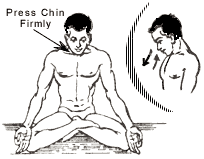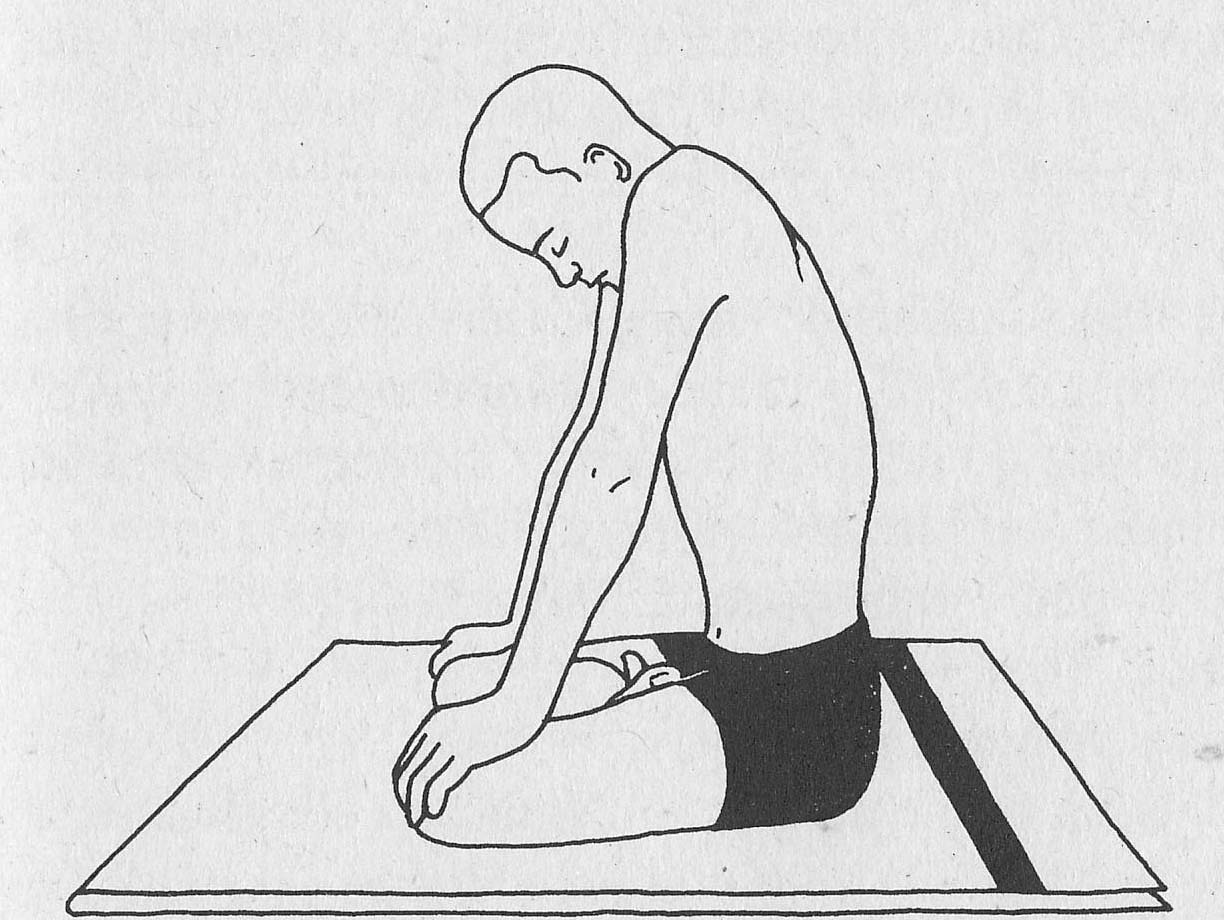As discussed in the previous article, mudras seal the openings of the body to retain prana and bandhas seal as well as direct the prana. Yoni Mudra seals the openings of the head. Jalandhara Bandha seals the opening of the throat.
It is practised with kumbhaka on inhalation. After the inhalation hold the breath and push the breath into the belly. Raise the chest towards the chin. Simultaneously lower the chin to the chest. Whilst lowering the chin, keep the spine upright and lengthen and relax the neck. Bring the chin and chest together, if possible. Relax the belly and keep your attention behind the navel so that the breath moves down. Hold as long as is comfortable. Release the bandha on exhalation. Breathe out slowly.
There should not be a feeling of discomfort in the lungs whilst holding the bandha and one should not release the breath ‘explosively’. If this happens, then you are holding the bandha beyond capacity and therefore you should hold the bandha for a shorter period of time.
Jalandhara Bandha helps to bring the prana towards the digestive fire in the belly. This fire is called agni. When the prana and the apana are united in the agni, then greater energy is created, which is utilised for meditation. We will discuss more about apana with the Mula Bandha.
Also, there is the esoteric belief that when we do practices that are heating, the nectar of immortality, (amritam), that is stored in the head, can get burned up. Hence Jalandhara Bandha prevents the heat from rising into the head.
Again, it is strongly suggested that this should be learnt under supervision of a competent teacher.
Written by:
Swami Vidyananda, resident monk at Ananda Kutir Ashrama.


